Licensed Pharmacies: How to Verify Your Pharmacy Is Legitimate and Avoid Counterfeit Drugs
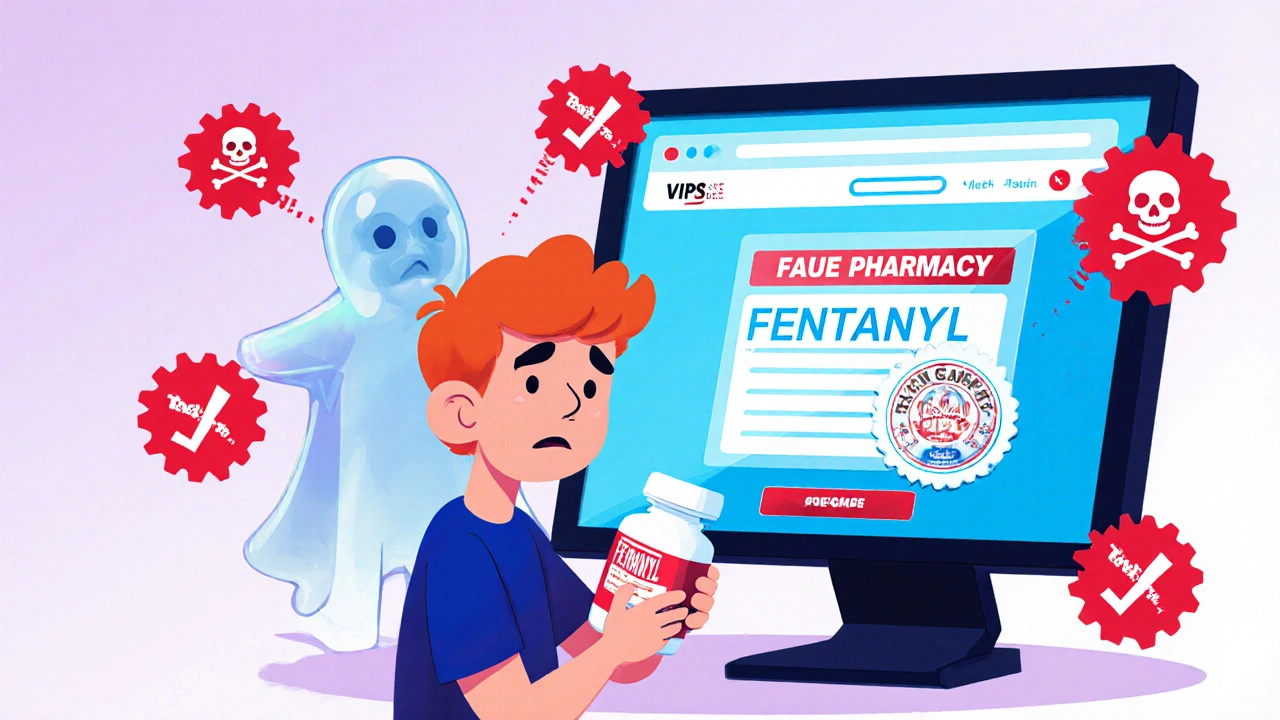
Every year, millions of people in the U.S. buy prescription drugs online. Some of them are saving time and money. Others are risking their lives. The difference? One is a licensed pharmacy. The other is a fake website selling fake pills.
You don’t need to be a pharmacist to tell the difference. You just need to know where to look-and what to look for. Too many people skip this step. They see a low price, a fast delivery, and a professional-looking website. They click "Buy Now." And then they wonder why their blood pressure medication didn’t work-or why they ended up in the ER.
What Makes a Pharmacy Licensed?
A licensed pharmacy isn’t just a business with a website. It’s a regulated health care provider. Each one must be approved by the state board of pharmacy where it operates. That means the pharmacists have passed exams like the NAPLEX, the facility meets safety standards, and the pharmacy keeps records of every prescription it fills.
In 2023, there were about 66,000 licensed pharmacies in the U.S. That sounds like a lot. But here’s the problem: the FDA estimates that 1% to 3% of the $575 billion U.S. prescription drug market comes from unlicensed, illegal sources. That’s between $5.75 billion and $17.25 billion in counterfeit or unsafe drugs circulating every year.
These aren’t just random scams. Some look like real pharmacies. They use real logos, fake NABP seals, and even copy real addresses. One consumer in 2023 lost $850 to a site that showed a forged NABP accreditation seal. That’s why you can’t trust appearance alone.
The Three Ways to Verify a Pharmacy
If you’re buying medication online-or even if you’re switching to a new local pharmacy-check its legitimacy using these three methods. Don’t pick one. Use all three.
- Check your state’s board of pharmacy website. Every state has a public database where you can search by pharmacy name or license number. In California, you enter the license number without any prefixes like "PH" or "P"-just the digits. Florida offers free, instant verification. California takes up to 30 days for written requests, but their online system works fast. If the pharmacy says it’s licensed but doesn’t show up in the database, walk away.
- Look for VIPPS accreditation. The Verified Internet Pharmacy Practice Sites (VIPPS) program, run by the NABP, is the gold standard for online pharmacies. Only pharmacies that meet strict safety, privacy, and licensing rules get this seal. As of 2023, the American Society of Health-System Pharmacists found that VIPPS identifies 98.7% of illegitimate online pharmacies. You’ll find the VIPPS logo on the website’s footer. Click it. It should link directly to the NABP’s verification page.
- Use NABP’s License Verification portal. The NABP Verify program lets you search across all participating states at once. It’s not free-it costs $125 a year for professionals-but consumers can use it for free. Type in the pharmacy’s name or license number, and it pulls real-time data from state boards. If the license is inactive, suspended, or under investigation, you’ll see it immediately.
These aren’t optional steps. They’re your safety net.
Red Flags That Mean Walk Away
Here’s what real licensed pharmacies never do:
- They never sell prescription drugs without a valid prescription. If a site lets you buy Adderall or insulin without uploading a script, it’s illegal.
- They never hide their physical address. Use Google Maps Street View. If the address is a residential house, a PO box, or a warehouse with no signage, that’s a red flag.
- They always have a licensed pharmacist available to answer questions. In 45 states, it’s required by law. If you call and get an automated message or a call center in another country, that’s not a pharmacy-it’s a storefront for fraud.
- They don’t offer "discounts" that sound too good to be true. A 90-day supply of Lipitor for $10? That’s not a deal. That’s a death sentence waiting to happen.
One woman in California, Maria Chen, caught a problem this way. She verified her pharmacy’s license after noticing her medication looked different. The system showed the pharmacist-in-charge had resigned-but the pharmacy kept operating. That’s a violation of California law. She reported it. The pharmacy was shut down.
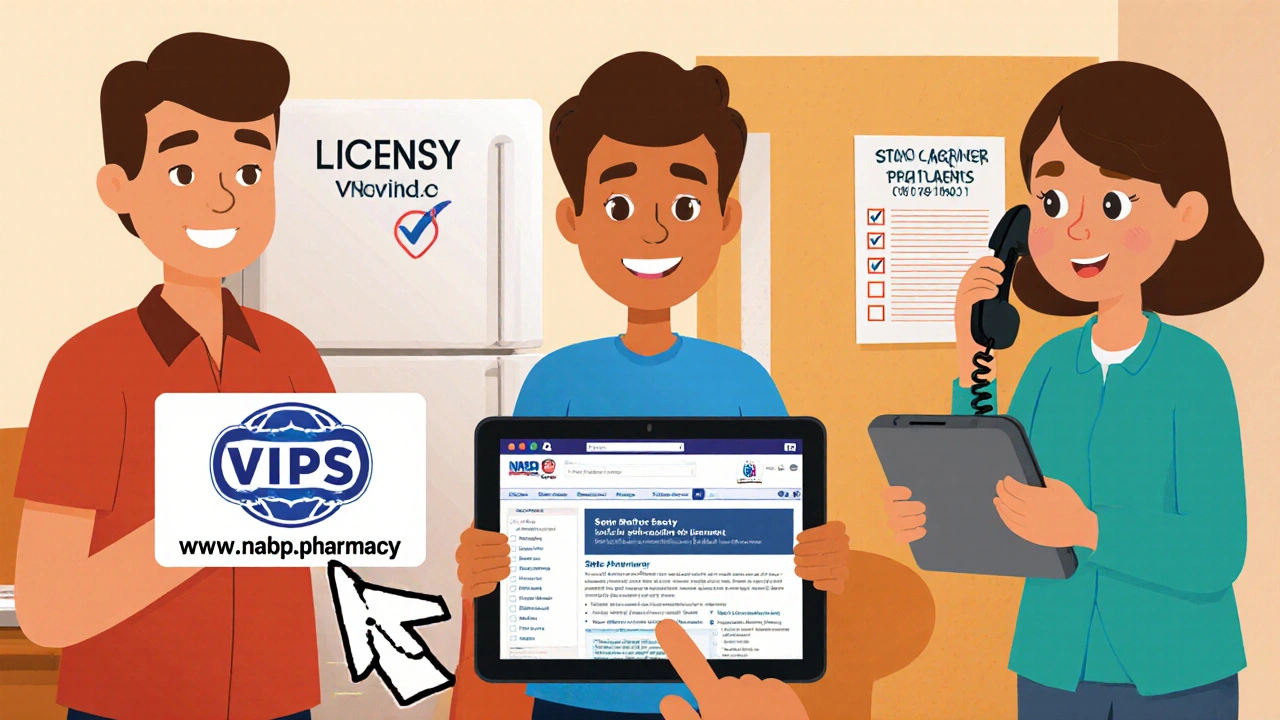
Why State Laws Vary (And Why It Matters)
Not all states have the same rules. That’s why verification can feel confusing.
Some states require fingerprint background checks for pharmacists. Others accept online checks. California charges $120 for a license verification request. Florida charges nothing. And 17 states require extra paperwork for pharmacies shipping drugs across state lines.
This patchwork system is a problem. A 2023 study found that the average consumer spends just 2.7 minutes checking a pharmacy’s legitimacy. Most people don’t realize that a license from Texas doesn’t mean the pharmacy is legal in New York. That’s why using NABP Verify or VIPPS is so important-they cut through the state-by-state mess.
There’s also the issue of fake seals. Some illegal sites copy the VIPPS logo and put it on their homepage. But if you click it and it doesn’t take you to the NABP’s official site, you’re being fooled. Always check the URL. It should be www.nabp.pharmacy.
What Happens When You Buy from an Unlicensed Pharmacy?
Counterfeit drugs aren’t just ineffective. They’re dangerous.
Some contain the wrong dose. Others have no active ingredient at all. Some are laced with fentanyl, rat poison, or industrial chemicals. The NABP found that unlicensed pharmacies are 4.7 times more likely to dispense incorrect medications-and 8.2 times more likely to be involved in controlled substance diversion.
And it’s getting worse. In 2023, the FDA increased enforcement actions against illegal online pharmacies by 22%. More sites are popping up. More people are getting hurt. The FDA’s 2024 Strategic Plan includes $15 million to improve detection of these sites-and a goal to cut consumer harm by 40% by 2026.
But technology alone won’t fix this. You have to be the first line of defense.
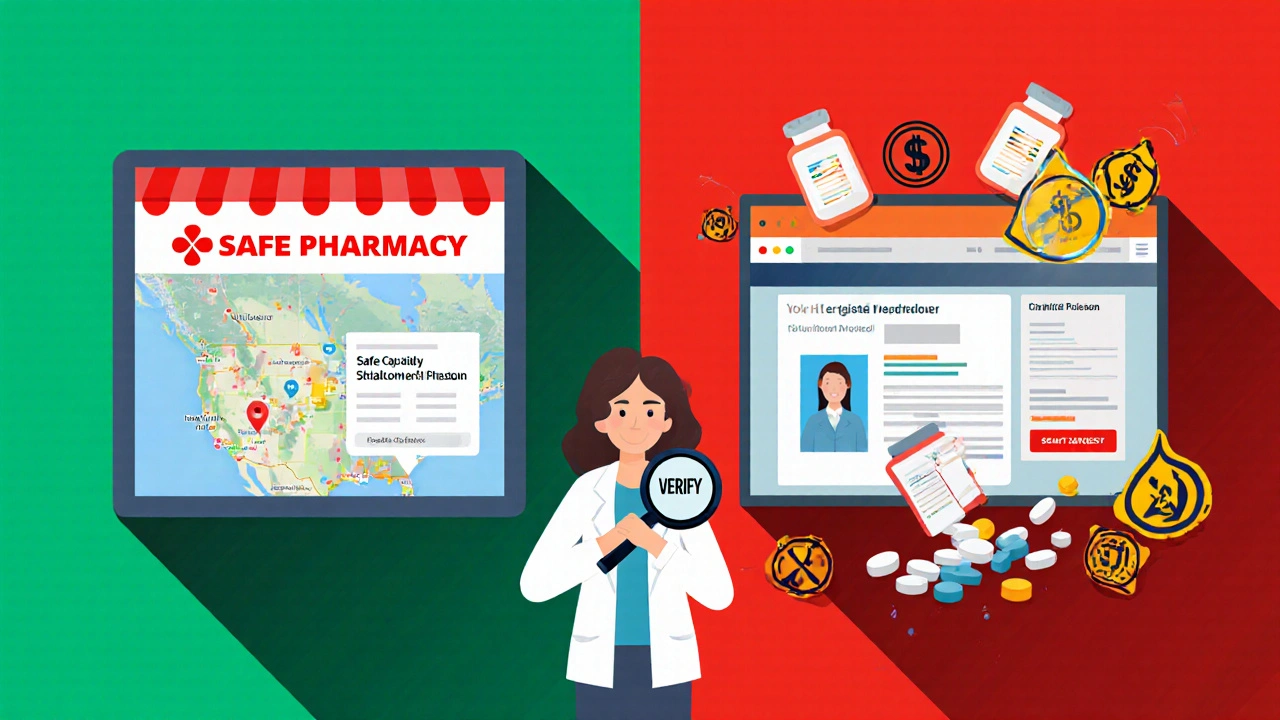
How to Make Verification a Habit
Verifying a pharmacy shouldn’t be a one-time task. It should be part of your routine.
- When you get a new prescription, check the pharmacy’s license before you pick it up.
- If you’re switching to an online pharmacy, verify it before you pay.
- Even if you’ve used a pharmacy for years, check again every year. Licenses can be suspended. Pharmacists can leave. Rules change.
Set a reminder on your phone. Add it to your medication checklist. Make it as normal as checking the expiration date on your pills.
And if you find a fake pharmacy? Report it. The FDA has a portal for reporting suspicious sites. The NABP also takes tips. Your report could stop someone else from getting hurt.
What’s Changing in 2025?
The system is improving-but slowly. In January 2024, NABP launched Phase 2 of its InterConnect system, which now lets 43 states update license statuses in real time. That means if a pharmacy loses its license, you’ll know within hours-not weeks.
California also updated its rules: any out-of-state pharmacy shipping to California residents must now offer an 800 number for direct pharmacist access. That’s a big step toward accountability.
By 2027, experts predict we’ll see national licensure standards that cut down the current confusion. But until then, you’re still responsible for checking.
The bottom line? Licensed pharmacies save lives. Unlicensed ones put them at risk. There’s no middle ground.
How do I know if an online pharmacy is real?
Check three things: 1) Look for the VIPPS seal from NABP and click it to verify it links to the official NABP site. 2) Search the pharmacy’s name or license number on your state’s board of pharmacy website. 3) Make sure the pharmacy requires a valid prescription and lists a physical address you can verify on Google Maps. If any of these are missing, it’s not legitimate.
Can I trust pharmacies that offer very low prices?
No. If a pharmacy offers brand-name drugs at prices far below what you’d pay at CVS, Walgreens, or your insurance pharmacy, it’s likely selling counterfeit or expired medication. Legitimate pharmacies follow pricing rules set by manufacturers and insurers. A 90-day supply of Lipitor for $10 is not a discount-it’s a warning sign.
What’s the difference between NABP Verify and VIPPS?
NABP Verify is a tool to check if a pharmacy holds a valid license in any U.S. state. VIPPS is a voluntary accreditation program that means the pharmacy meets extra safety standards for online sales, including secure prescription handling and pharmacist availability. All VIPPS pharmacies are licensed, but not all licensed pharmacies are VIPPS-accredited. For online pharmacies, VIPPS is the higher standard.
Do I need to verify a local pharmacy too?
Yes. Even if you’ve been going to the same local pharmacy for years, licenses can expire or be suspended. Pharmacists can leave. Staffing can change. A 2023 case in California showed a pharmacy kept operating after its pharmacist-in-charge resigned-without notifying the board. Always check the license status at least once a year.
What should I do if I bought medicine from a fake pharmacy?
Stop taking the medication immediately. Contact your doctor or pharmacist to discuss safe alternatives. Report the pharmacy to the FDA’s MedWatch program and to NABP. Keep any packaging, receipts, or emails as evidence. If you experience side effects, seek medical help right away. Counterfeit drugs can cause serious harm-even if you feel fine at first.
14 Comments
Chris Ashley
Bro I bought insulin from some site for $15 and it worked? I’m not gonna lie. My blood sugar’s been stable for months. Who cares if it’s not ‘licensed’? The system’s rigged anyway.
kshitij pandey
Wow this is so helpful! 😊 I’m from India and I never knew how to check if a pharmacy is safe online. Now I’ll always look for VIPPS and state board info. Thank you for sharing this wisdom - it can save so many lives, including mine!
Brittany C
Validating via NABP Verify is non-negotiable. The regulatory architecture of U.S. pharmacy licensure is intentionally decentralized, and state-by-state variance creates exploitable gaps. Without real-time interconnectivity, consumer risk escalates exponentially. VIPPS is the only meaningful heuristic for digital pharma.
Sean Evans
LOL you people actually think this stuff matters? 🤡 You’re all scared of a website because it doesn’t have a VIPPS seal? I’ve bought meds from 5 different ‘unlicensed’ sites and I’m still alive. The FDA’s just trying to protect Big Pharma’s profits. Stop being sheep.
Also, why are you all so obsessed with ‘licensing’? I’m paying for results, not paperwork. If the pill works, shut up and take it.
Anjan Patel
OMG I CANNOT BELIEVE THIS IS STILL A THING!!
I just got back from the ER because I took some ‘discount’ blood pressure meds from a site that looked legit - turns out it was a scam with fentanyl in it!! My heart was racing for 12 hours!!
And now I’m supposed to spend 20 minutes checking licenses? WHO HAS TIME FOR THIS?!?!?!
Why doesn’t Amazon just vet these pharmacies?? Why is it MY job to be a pharmacist detective??
My mom died from fake meds in 2020 and now I’m supposed to ‘make it a habit’? I’m done. I’m done.
Scarlett Walker
This is such a needed post! I used to buy my antidepressants from some sketchy site because it was cheaper, but after I read this I checked the license and found out the pharmacist had been fired 6 months prior. I switched back to CVS and now I feel so much safer. 🙌 You’re right - it’s not about saving $20, it’s about not ending up in the hospital.
Hrudananda Rath
It is an incontrovertible fact that the proliferation of unregulated pharmaceutical e-commerce represents a profound dereliction of public health governance. The absence of a unified national licensing framework, coupled with the commodification of medical necessity, has precipitated a systemic erosion of pharmacological integrity. One is compelled to lament the epistemic laziness of the contemporary consumer, who confuses aesthetic professionalism with regulatory legitimacy.
Brian Bell
Y’all are overthinking this. I just Google the pharmacy name + ‘scam’ and if there’s even one bad review, I’m out. Been doing it for 5 years, never had a problem. Also, if the site has a live chat with a real person? That’s the gold standard. 💯
Nathan Hsu
Let me be clear: the VIPPS seal is not merely a logo - it is a covenant of safety, a testament to compliance, and a shield against the predatory machinations of unscrupulous actors. And yet, the NABP Verify portal - though underutilized - remains the most potent tool in the consumer’s arsenal. Do not underestimate its power. Do not neglect its utility. Your life depends on it.
Ashley Durance
Everyone’s acting like this is new information. It’s not. The FDA’s been warning about this since 2012. People just ignore it until they’re hospitalized. You don’t need a degree to understand ‘if it’s too good to be true, it’s fake.’ But you do need to stop being lazy.
Scott Saleska
Actually, you missed something. Even if a pharmacy is licensed, you still need to check if the pharmacist-in-charge is active. That’s a huge loophole. I had a friend whose pharmacy was ‘licensed’ but the pharmacist had been suspended for 11 months and they kept filling scripts. State boards don’t update fast enough. NABP Verify is the only thing that catches it in real time.
Ryan Anderson
Just verified my pharmacy using NABP Verify. License active. VIPPS accredited. Pharmacist on duty. Physical address matches Google Maps. 🎯 Done in 90 seconds. This is basic hygiene. If you’re not doing this, you’re gambling with your health. No excuses.
Eleanora Keene
I’m so glad this was posted! I’ve been telling my elderly neighbors for years to check their pharmacies - they just trust the website because it looks nice. I printed out the NABP steps and left them on their fridge. One of them just called me to say she caught a fake pharmacy because of it. 💙 You’re doing good work.
Joe Goodrow
Why are we letting foreign pharmacies sell to Americans? This is a national security issue. If you’re buying meds from India or China, you’re funding criminals and weakening our healthcare system. Buy American. Support U.S. pharmacies. Period.
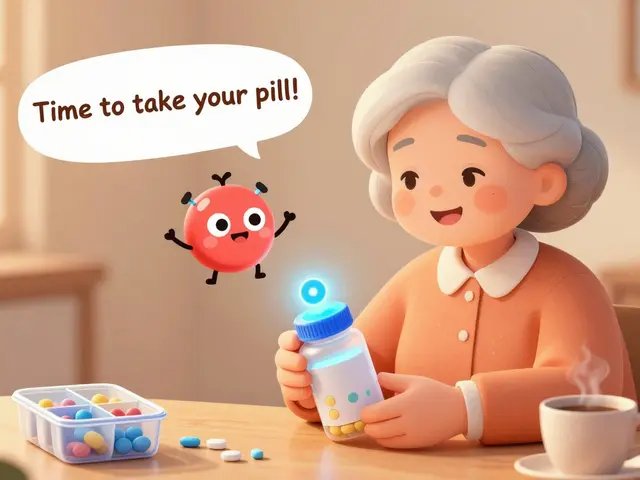


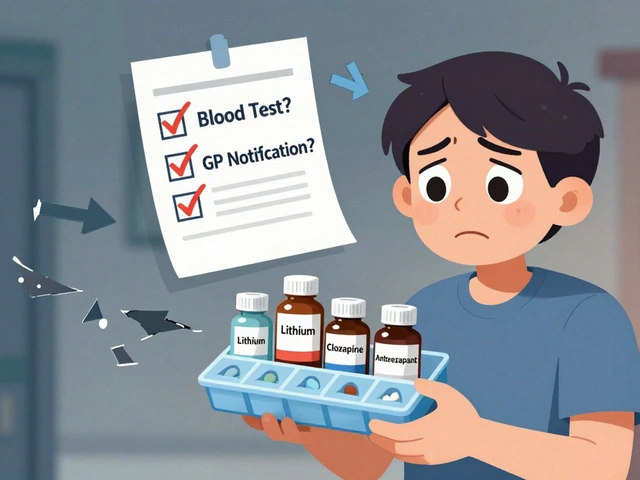
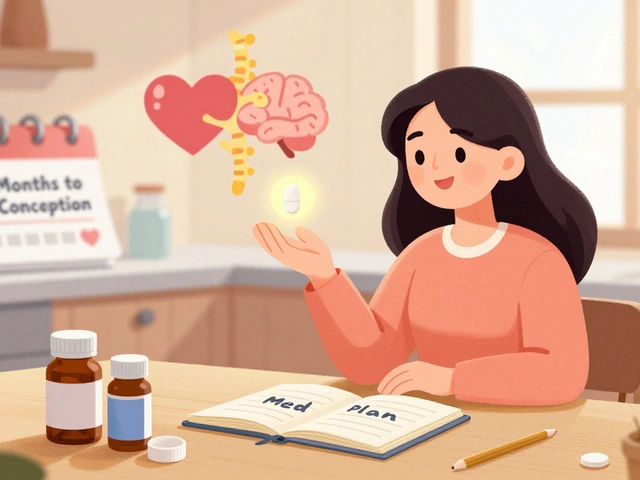

Write a comment